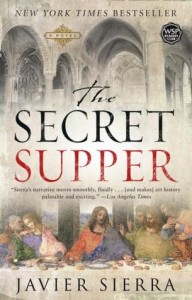
It is the end of summer 1876, and San Francisco has been struck by a heat wave and a smallpox epidemic. Jenny Bonnet, a frog-hunting woman dressed in men’s clothes, is riding her bicycle when she collides with Blanche Beunon, a burlesque dancer and prostitute. This is the start of an unexpected friendship that will end a month later when Jenny is shot dead in a saloon at San Miguel Station. Blanche is convinced that the bullets were meant for her, and she tries to piece together the events of the previous weeks in order to make sense of this horrific murder. At the same time, she is desperate to find her one-year-old son who was kidnapped by Blanche’s ex-boyfriend/pimp, Arthur, and his friend, Ernest.
On 28 April 2014, Emma Donoghue was in Ottawa to promote her book, Frog Music. She explained that, 15 years ago, she discovered by chance an article about the real-life Jenny, and she thought that it would make a great novel. In order for the book to be really close to the facts, the author did a lot of research, mainly online: she pored through ship immigrant lists, genealogy websites and newspaper databases. She also read memoirs and travel guides of the time, and looked at photographs from the end of the nineteenth century. However, Emma Donoghue decided on writing a fiction rather than a non-fiction because there were not enough facts to make a biography. That being said, almost all the characters in the book come from historical records.
Another important component of the book is music. The author wanted to show the culture of the time using folk songs that were popular in the 1870s. In fact, at the end of Frog Music, there is a historical background for each of the songs used in the book, and it shows that the lyrics evolved through time. In the end, the author was surprised by how the music took over the novel: there are almost 30 different songs in the book (here is a link to listen to the songs in Frog Music).
I thought this real-life murder case was interesting, and I particularly enjoyed the historical elements of the story. The baby farms horrified me, and I couldn’t imagine leaving my child in one of those places while I was working! However, there were repetitions in the story, and the narrative was slow at times. In addition, Blanche was not a very likable character, unlike Jenny who I found fascinating: she was ahead of her time and carefree, and would have deserved to be the main character in Frog Music. In fact, I would have loved to know more about her background, particularly her childhood. The ending was satisfying though: Emma Donoghue offers a culprit even though the real-life murder case was never really solved.
Fun facts about the book and the author:
- San Francisco was founded by bachelors, and was a city of pleasure. In 1876, people rented dwellings, and didn’t stay in the city for long. San Francisco was multicultural, but the Chinese were usually maltreated.
- Emma Donoghue writes on a treadmill desk that allows her to walk at the same time as she works.
- The author has never hunted frogs but she watched Youtube videos to familiarize herself with the practice.
- Emma Donoghue’s favorite writer is Charles Dickens.
About the author and her work: Emma Donoghue’s website
If you liked this book you might also like:



